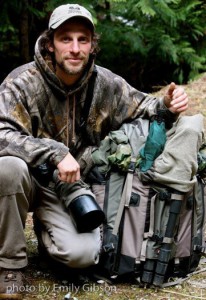The Squirrel World of the Pacific Northwest

On Friday, January 10th, David Moskowitz came to Highland Wonders to speak about squirrels. This was David’s first time offering a presentation on squirrels.
“The Pacific Northwest has some of the highest diversity of squirrels in the world. There are about 112 squirrel species in the world, and we have about 25 of them here in the Pacific Northwest… And part of the reason we have such a tremendous diversity is because of the diversity of the landscape that we have here, ranging from coastal rainforests to interior deserts and then of course the mountains all the way up to boreal and alpine highland forests.”
The Pacific Northwest is home to one of the most diverse collections of squirrel species anywhere in the world, from the tall trees of the coastal rainforest to the alpine tundra of the high Cascades to the deserts of the Columbia Basin. Squirrels are one of the most watchable types of wildlife in our region and the specific adaptations and behavior of our tree squirrels, ground squirrels, flying squirrels, marmots, and chipmunks provide a window into one of the most successful families of rodents in the world. David Moskowitz, author and photographer of Wildlife of the Pacific Northwest, provided an evening of engaging photography, fun stories from the field, and plentiful information about these furry and noisy neighbors.
“So much of our wildlife works hard to disappear into the landscape. However, generally being active by day — and often quite noisy and living in very conspicuous places — squirrels stand out,” says Moskowitz. “But how often do we actually take the time to really observe them, beyond being curious about what they are barking at in the woods, or maybe annoyed with them at our bird feeder? One of the things I like the most about squirrels is they are a relatively easy entry into the world of wildlife biology and wildlife watching, no matter where people live in our region.”
About David Moskowitz
David Moskowitz is a professional wildlife tracker, photographer, and outdoor educator. He is the author of two books, Wildlife of the Pacific Northwest and Wolves in the Land of Salmon. He has contributed his technical expertise to a wide variety of wildlife studies regionally and in the Canadian and U.S. Rocky mountains, focusing on using tracking and other non-invasive methods to study wildlife ecology and promote conservation. He helped establish the Cascade Citizen Wildlife Monitoring Project, a citizen science effort to search for and monitor rare and sensitive wildlife in the Cascades and other Northwest wildlands.
David’s extensive experience as an outdoor educator includes training mountaineering instructors for Outward Bound, leading wilderness expeditions throughout the western United States and in Alaska, teaching natural history seminars, and as the lead instructor for wildlife tracking programs at Wilderness Awareness School.
David holds a bachelor’s degree in environmental studies and outdoor education from Prescott College. David is a certified Track and Sign Specialist through Cybertracker Conservation and as well as an evaluator for this rigorous professional certification program. Contact David directly to inquire about his photography, classes and workshops or hosting an evaluation in your region.